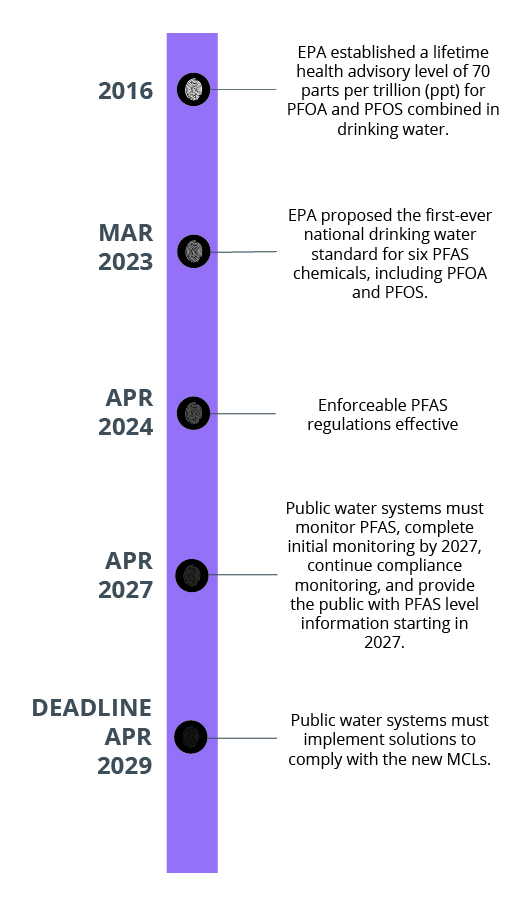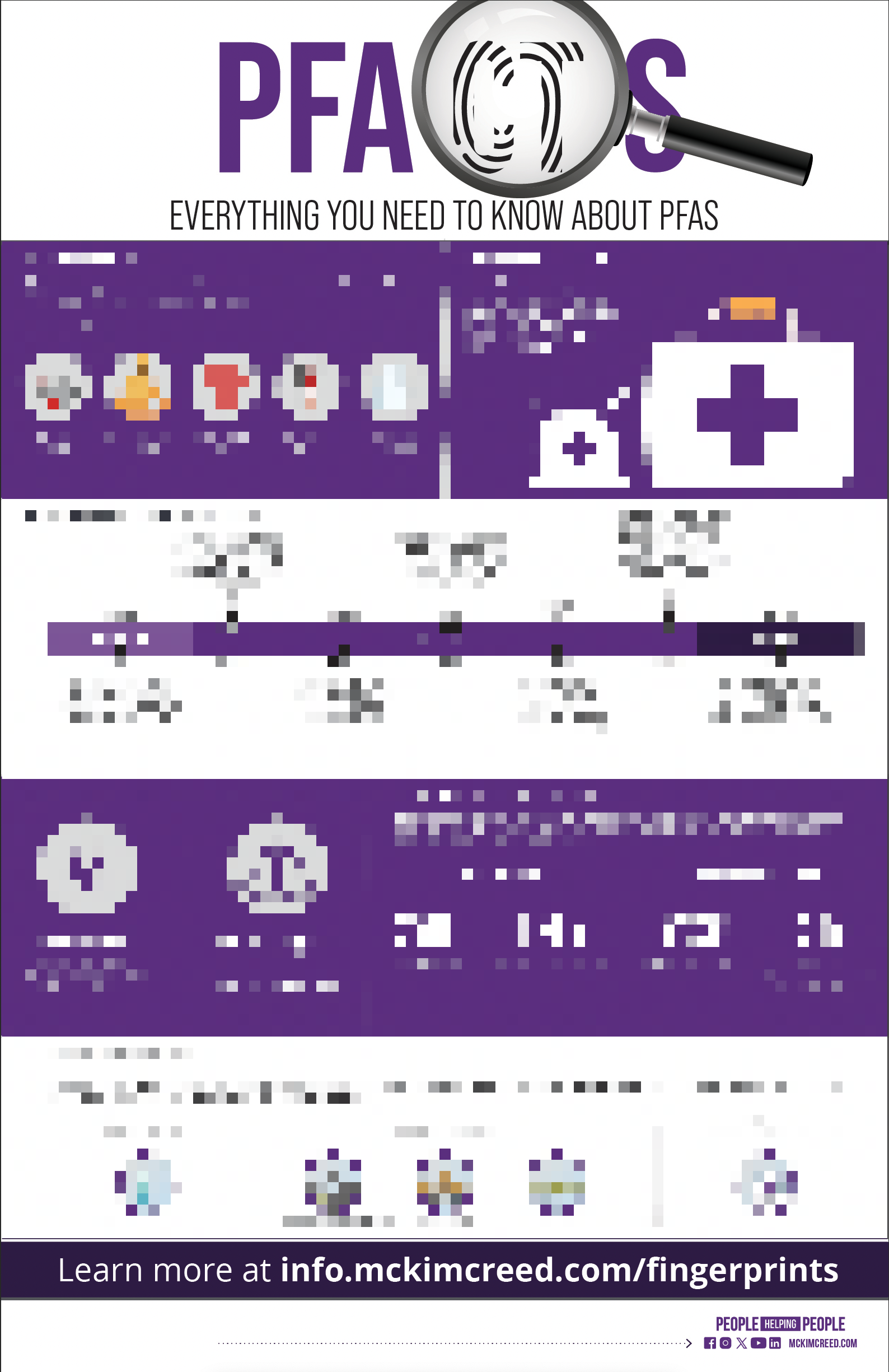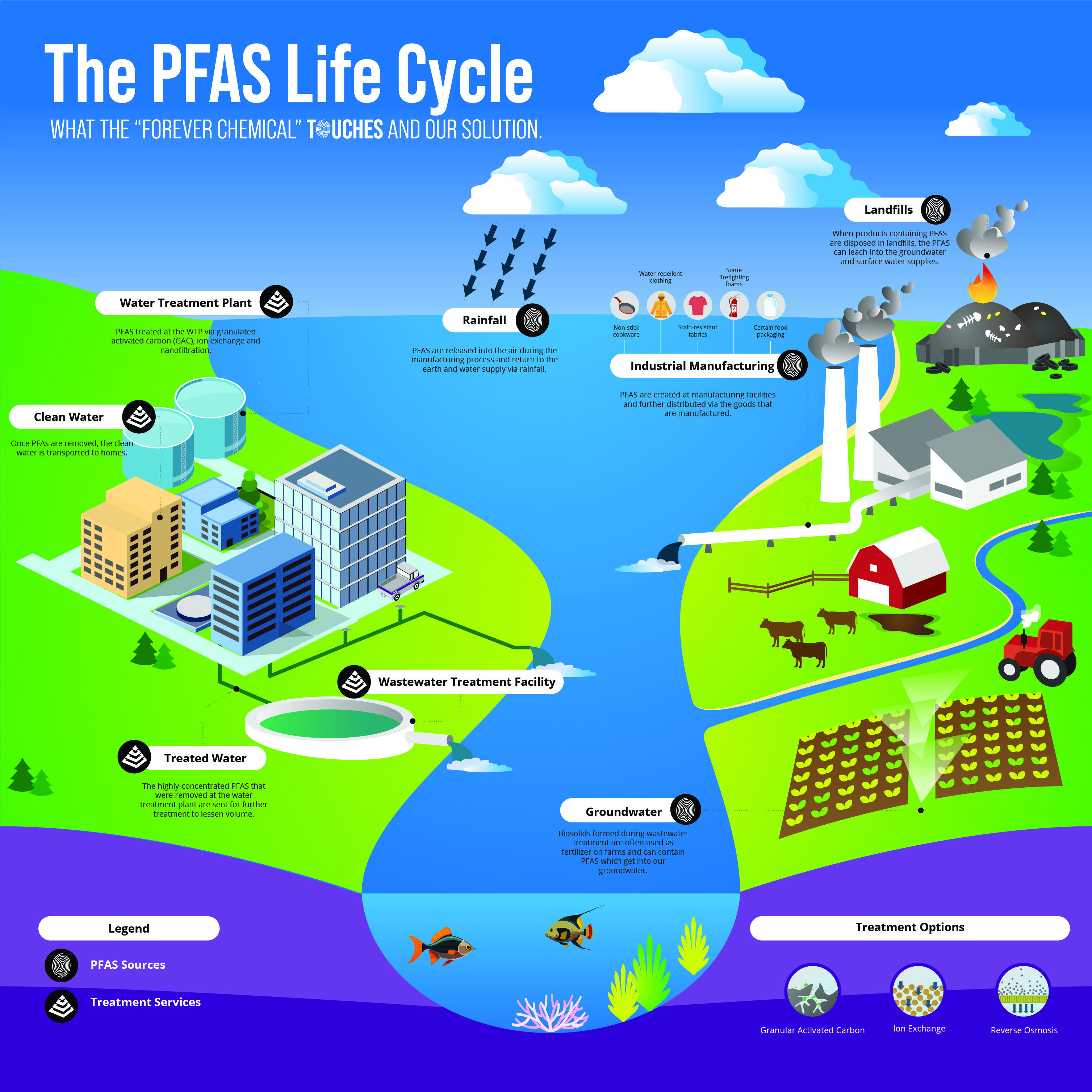What is PFAS?
Common Sources
Nonstick cookware
Water-repellent clothing
Stain-resistant fabrics
Some firefighting foams
Certain food packaging
The EPA's Ruling
On April 10, 2024, the EPA announced the final National Primary Drinking Water Regulation for six PFAS. The regulation establishes legally enforceable levels for individual PFAS MCLs and a Hazard Index MCL for PFAS mixtures. EPA evaluated over 120,000 comments submitted by the public on the rule proposal and expects that over many years, the final rule will prevent PFAS exposure in drinking water for up to 200 million people, prevent thousands of deaths, and reduce tens of thousands of PFAS-attributable severe illnesses.

Maximum Contaminant Level (MCL) of 4 parts per trillion (ppt).
.png)
Maximum Contaminant Level (MCL) of 4 parts per trillion (ppt).

The EPA's plan outlines the three major steps a utility must take to comply with the National Primary Drinking Water Regulations.
Monitoring for PFAS
Solution Implementation
Notification to the Public
National Primary Drinking Water Regulation Timeline

National Primary Drinking Water Regulation Timeline

Funding Resources for PFAS Treatment
The EPA is taking action to hold polluters accountable, reduce PFAS pollution, and help ensure the safety of our nation’s drinking water. Our team of experts are well versed in funding opportunities on both the state and local levels.
$ 9 B
in funding from the Bipartisan Infrastructure Law
$ 12 B
in funding from Drinking Water State Revolving Funds
$ 1 B
in funding from the Emerging Contaminants in Small or Disadvantaged Communities(EC-SDC) Grant Program
$ 150 M
Funding was received for McKim & Creed's clients regarding PFAS and Emerging Contaminants funding.
McKim & Creed is a leader in engineering and funding efforts regarding PFAS and emerging contaminants. Our firm's submittal to FDEP was the first grant funded by FDEP for PFAS and Emerging Contaminants
Available Resources
Meet Our National Experts

Phil Locke, PE
National Treatment Process Engineer

MJ Chen, PE, PhD
National Treatment Process Engineer

Josh Marlin
Project Manager

Ram Prasad
The PFAS Terminator (Investigation and Remediation)

Ally Mauck
National Funding Expert

Katie Elliott, PE
National Funding Expert

Omar Khan, PE
Project Manager

Matt Clark, PE
Project Engineer
Experience You can See
Meet Our National Experts

Phil Locke, PE
National Treatment Process Engineer

MJ Chen, PE, PhD
National Treatment Process Engineer

Josh Marlin
Project Manager

Ram Prasad
The PFAS Terminator (Investigation and Remediation)

Ally Mauck
National Funding Expert

Katie Elliott, PE
National Funding Expert

Omar Khan, PE
Project Manager

Matt Clark, PE
Project Engineer
We're Here to Help











.jpg)